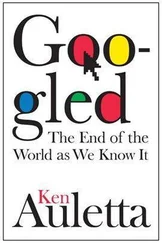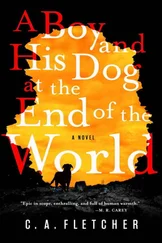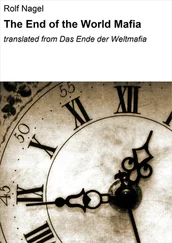Perhaps the single greatest contrast between the rival theologies of Revelation and the Gospels is found in the passages where the end-times are described. According to the vision of judgment day in a passage of the Little Apocalypse as it appears in Matthew, Jesus will welcome into the heavenly kingdom all those who gave food to the hungry and drink to the thirsty, clothed the naked and sheltered the homeless, and visited the sick and the imprisoned. “Verily I say unto you,” announces Jesus in what is arguably the single most sublime and yet revolutionary line of text in all of the Christian scriptures, “inasmuch as ye have done it unto one of the least of these my brethren, ye have done it unto me.” 5
John, however, has nothing quite so encouraging or elevating to say to good-hearted men and women who hope to achieve salvation through acts of kindness and compassion here on earth. According to Revelation, the first souls to be saved—or “sealed,” as John puts it—will be the 144,000 men whose only apparent merit is that they “have not defiled themselves with women.” 6At the time of the first resurrection and judgment, only the saints and martyrs—those who refused to worship the “beast” or receive his mark on their hands and foreheads, and those who were beheaded for professing their belief in Christ—will be raised from the dead to reign alongside Jesus during the millennium that he will spend as king on earth.
Then, after Satan is released from the bottomless pit and defeated once and for all, the rest of the dead will be resurrected and judged “by what they had done.” 7John does not specify what kind of conduct in life will bring salvation after death, but the strong implication throughout the book of Revelation is that faith counts more than good works, and only the “saints” will be spared from eternal punishment. Everyone else—including not only “murderers, fornicators, sorcerers and idolators” but also “the cowardly, the faithless, and the polluted”—will spend all of eternity in “the lake that burns with fire and brimstone, which is the second death.” 8
Readers of the Christian scriptures, ancient and modern, have been troubled by the contrast between these two ways of imagining the end of the world. One modern scholar, for example, characterizes Revelation as “sub-Christian” precisely because John is so obsessed with vengeance-taking and so little concerned with the acts of care and mercy that Jesus advocates in the Gospels. 9The Christian case against Revelation is memorably summed up by Martin Luther at a point in his life when he was not yet fully convinced that Revelation belonged in the Bible at all.
“My spirit cannot accommodate itself to this book,” Luther writes in the preface to a German edition of the Bible that he published in 1522. “There is one sufficient reason for the small esteem in which I hold it—that Christ is neither taught in it nor recognized.” 10
Luther, as we shall see, was hardly the first or only Bible reader to view the book of Revelation with alarm and concern. At its first appearance, Revelation was nearly excluded from the Christian scriptures, and its strange and punishing text has always puzzled, agitated, threatened, and offended many Christians who were prepared to accept Revelation as Holy Writ. But it also true that Revelation ultimately seized and held the Christian imagination—and, in some ways, the Western imagination—over the next fifteen centuries. John’s little book, sweet in the mouth but bitter in the belly, may have turned out be a failure as a work of prophecy, but it remained the equivalent of a best seller in the Middle Ages and long after.
Revelation has always been regarded by some Christian authorities as a dangerous book. Just as John seems to have intended, the text is capable of stirring up powerful emotions in its readers and hearers. Revelation is, by turns, a revenge fantasy, a parade of horribles, and something of a freak show. And the potent and intoxicating text sends some readers into their own fits of mystical ecstasy in which divine voices are heard and miraculous sights are seen. Nowadays, of course, we may be tempted to regard such phenomena as manifestations of mental illness, but the clergy of the infant Christian church were equally skeptical of ordinary men and women who claimed to be visionaries.
The earliest recorded example of religious excess inspired by the book Revelation dates back to the middle of the second century, a half century or so after the text first appeared in the Christian world. Revelation was the favorite biblical text of a man called Montanus, who appeared around 156 in the region of Asia Minor known as Phrygia, not far from the seven churches to which John addresses his letters, and announced himself to be a prophet in his own right. Among his coterie were Maximilla and Prisca, two charismatic young women who—like Montanus himself—were able to put themselves into ecstatic trance states at will and claimed to receive their own revelations directly from God, a phenomenon that came to be known as “New Prophecy.”
Like other freelance prophets who came before and after them, the Montanists were regarded as intolerably high-spirited by the clerical authorities who preferred to confine prophecy to the approved biblical texts. After all, if any man or woman was at liberty to advertise himself or herself as a prophet, the imaginations of otherwise good Christians might be set afire with odd, dangerous, and uncontrollable visions. For that reason, the church condemned the Montanists as heretics, but Montanus and his pair of prophetesses persisted in their self-appointed mission. Indeed, they insisted that the church need not be worried about a flurry of false prophets precisely because their own prophecies of the end-times were about to be fulfilled once and for all.
“After me there will be no more prophecy,” declared Maximilla, “but the End.” 11
Inspired by the visions in Revelation, the Montanists convinced themselves—and sought to convince everyone else—that the end was near. They taught that good Christians should abandon the ordinary pastimes of life and prepare to meet their maker. Thus, for example, they discouraged the remarriage of widows and widowers and the bearing of children by married couples: “The biblical command, ‘increase and multiply,’ is annulled by the fact that we are living in the last age.” 12And, significantly, they refused to regard the fantastic imagery of Revelation as a set of signs and symbols to be mined for hidden meanings. Rather, like countless other mystics and visionaries down through the centuries and millennia, they insisted on reading the text of Revelation as absolute and literal truth.
John, for example, describes in Revelation how he is transported “in the Spirit” to a mountaintop where an angel has promised to show him “the Bride, the wife of the Lamb.” What he sees, however, is the city of Jerusalem “coming down out of heaven,” radiant with the glory of God, its foundations fashioned out of precious stones in every color, its walls of jasper and pearl, its streets and buildings of pure gold. 13John himself seems to concede that the Bride of the Lamb is merely a symbol for the celestial Jerusalem, and he suggests that the heavenly city is something that will be seen only by the resurrected saints and martyrs, and only after the world has finally been destroyed.
The Montanists, however, lived in urgent anticipation that they would soon behold the New Jerusalem in the here and now, a miraculous construction of gold and gemstone descending through the clouds and landing on the solid ground. They ignored the passages in Revelation where John’s announces that the text must be read “spiritually”—that is, as a set of allegories and symbols. 14Rather, they were convinced that the heavenly city would come to rest in the vicinity of a town called Pepuza, a place not far from the seven cities whose churches are addressed in Revelation and conveniently located in the region of Phrygia where the Montanists originated. Like so many other readers and hearers of Revelation, starting in antiquity and continuing into our own age, they cherished the notion that John was prophesying the plain truth of things that must shortly and literally come to pass.
Читать дальше










